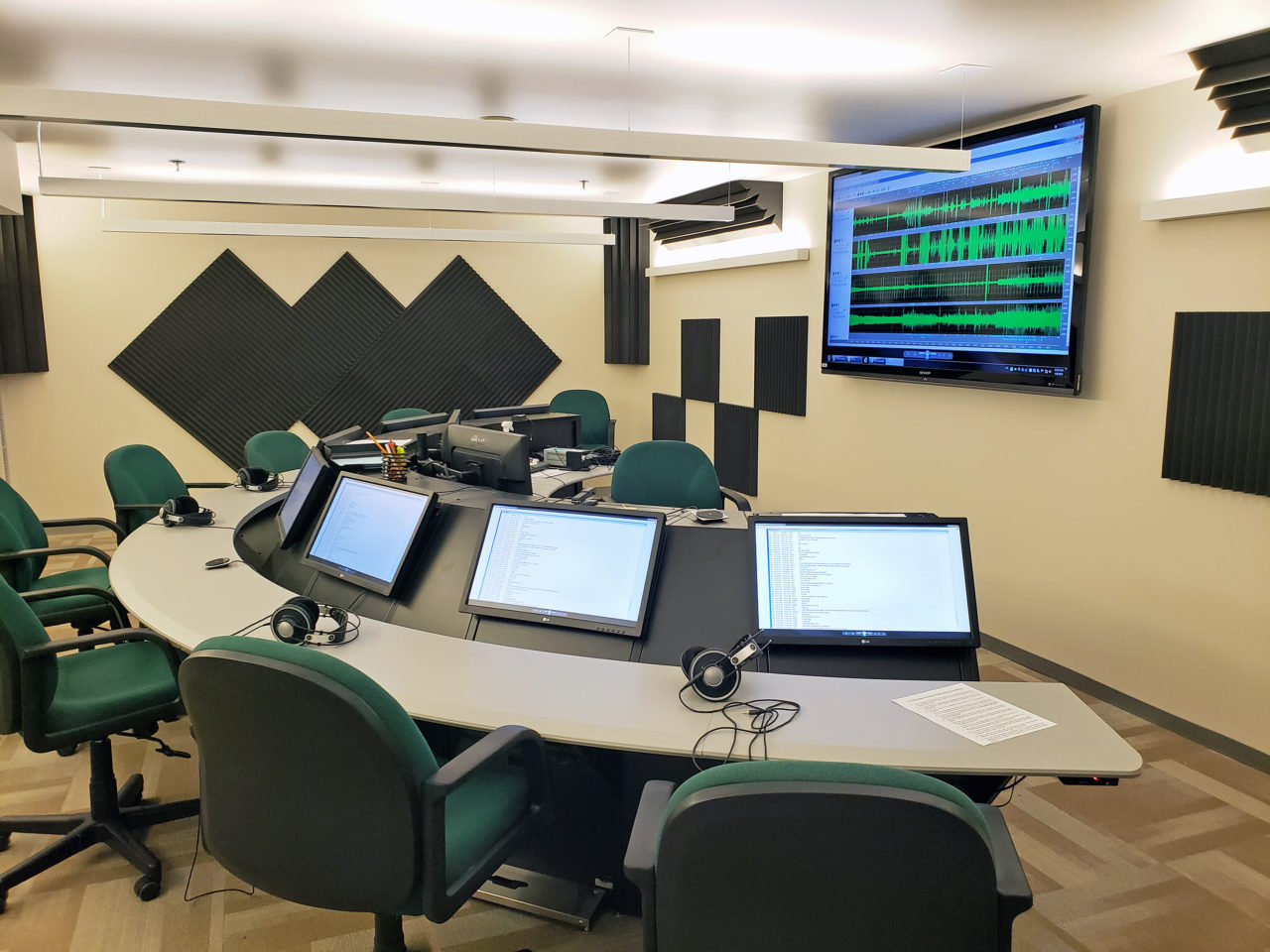
The listening room at NTSB headquarters, showing audio from the US Airways Flight 1549 crash into the Hudson River. (Nick Zazulia)
You’ve read about the black box. In the wake of a crash, authorities scramble to find the black box, the key to the investigation.
It contains an aircraft’s flight data recorder (FDR) and cockpit voice recorder (CVR), which are, as soon as possible, sent off to a lab for analysis, or in a case like the recent Ethiopian Airlines Flight 302 crash, sent to another country better equipped to handle the job — Ethiopian investigators sent the flight’s recorders to the French Bureau d’Enquêtes et d’Analyses pour la Sécurité de l’Aviation Civile (BEA). Germany demurred and Ethiopia elected not to send the recorders to American authorities.
Major accidents with international interests are particularly sticky, according to Ben Hsu, supervisor of the recorder division at the U.S.’s National Transportation Safety Board (NTSB). The state of occurrence leads the investigation, but Annex 13 of ICAO regulations guarantees a spot on the investigation committee for certain stakeholders, including both countries and companies involved in design, manufacture and registry of both the aircraft and its engine. Additionally, any countries that had a significant number of citizens on board get to send representatives to participate in the investigation.
In the case of ET 302, that means the NTSB headed up an American contingent involving the FAA, planemaker Boeing and engine-maker GE to join the Ethiopian-led investigation which, due to the diversity of passengers on board, included at least five fatalities each from Kenya, Canada, China, Italy, France, Germany, the U.K and Egypt.
Such major investigations can get unwieldy due to their size, Hsu said, but it’s important that all those interests are represented.
In a U.S.-led investigation, once the recorders are received at NTSB headquarters in Washington, D.C., which Avionics International visited, they’re taken to the multi-room lab at the recorder division for data extraction. It is nominally a 12-member division, though they’re short-staffed at “eight or nine” and looking to hire right now, Hsu said. How long it takes to extract the data depends on several factors — the current workload, whether the recorders are damaged and the priority of the investigation — but the initial data is usually ready within a day or two of the recorders’ arrival.
“Those major investigations get kicked right to the top of the priority list,” Hsu said. “Action happens very quickly. They’ll be worked on that night if they’re received at a reasonable hour or the very next morning.”
The NTSB always has a “go team” on standby, a rotating group of on-duty people who will get called into action in the event of an accident, including representatives from each of the necessary departments in the agency. The recorder division is a bit of an exception, because specialties play a big role there.
“Part of my job is, I have to know who is in town and their specialties,” Hsu said. “Usually, we need either an FDR or CVR [specialist] and then someone else depending on the type of damage.”

Indonesian Navy divers recovered the cockpit voice recorder of Lion Air’s crashed Boeing 737 MAX 8. (Indonesia Navy Information Service)
Basically, different skill sets are required if the aircraft — and black box — was downed in the water, went up in flames or sustained impact damage. While one engineer in the recorders division might excel at safely cleaning and drying the hardware, another is more adept at soldering connectors back onto a memory chip without doing unnecessary damage. It’s crucial to the investigation that that data can be accessed at least one more time, so having the best person for the job there is a necessity — and, if it turns out that someone different would be a better fit as more is learned, Hsu will sub out members of his team.
One engineer in the division, Chris Babcock, said he has developed a few areas of expertise in his decade-plus at the NTSB, but his background is working with acoustics and voice recorders. That comes in handy if the CVR is found but not the FDR. By analyzing the background noise in the cockpit for certain engine or propeller sounds and pitches, Babcock can often tell certain things about their performance that would otherwise be learned from the FDR.
This is part one of a two-part story. Look out for the second part next week.